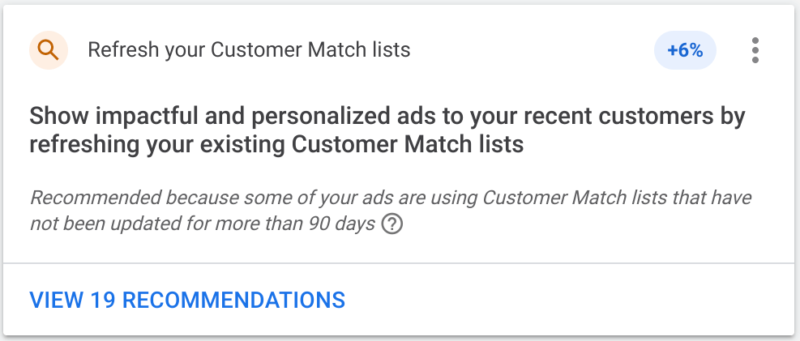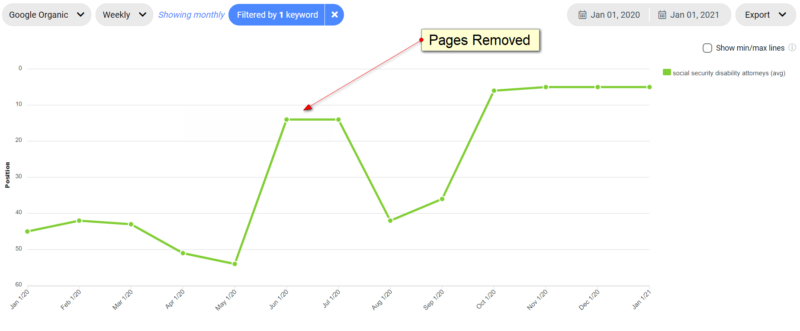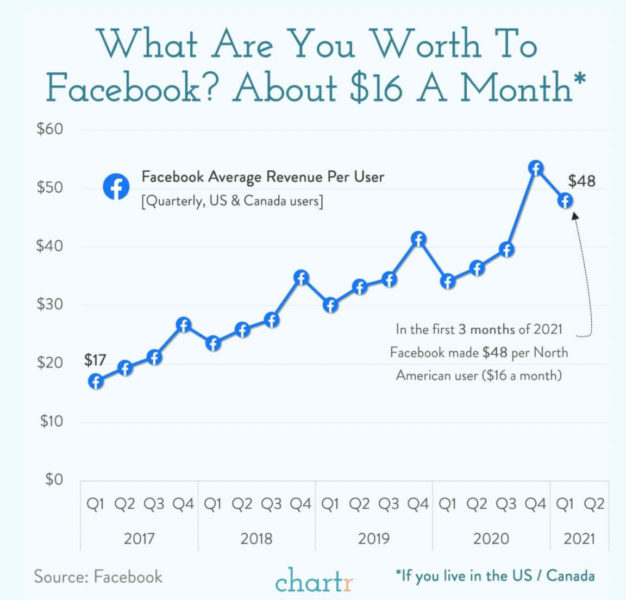Instant match rates in Google Ads and when content isn’t king; Monday’s daily brief
Plus, check out our new Google Search Console guide
Search Engine Land’s daily brief features daily insights, news, tips, and essential bits of wisdom for today’s search marketer. If you would like to read this before the rest of the internet does, sign up here to get it delivered to your inbox daily.
Good morning, Marketers, and let’s chat data,
Measuring your website’s performance can help you gather insights on what’s important to your audience, how they’re finding your content and whether that content is actually surfacing in search results. Google Search Console is a collection of free tools and reports to help site owners and SEO professionals do just that.
However, for anyone just diving in, it can be a little overwhelming. There are a lot of reports, and there’s a lot you can do with all that data. We’ve launched our updated guide to Google Search Console to help you sort through it all. Check it out here.
Carolyn Lyden,
Director of Search Content
Instant match rates are now available for Customer Match lists in Google Ads

Instead of having to wait to see what a customer list’s match rate is, Google will now show advertisers an estimated match rate as soon as they upload a list. Match rate data for previously uploaded lists is available as well, which may help us analyze historical trends.
Having an upfront idea of what a list’s match rate is can help us contextualize performance expectations. And, if the match rate seems inaccurate, that may help us identify potential issues and resolve them sooner. Advertisers may turn to first-party data to help them reach audiences as third-party cookies go by the wayside, and Customer Match is one way for us to take advantage of the data customers have provided us — having an instant match rate makes Customer Match a bit more transparent and easier to use.
Case study: More content is not always better for ranking in Google

Sterling Sky worked with a local personal injury lawyer in Florida whose previous SEO company added over 50 service area pages targeted toward each location. Their goal was to help the company rank in those individual areas, but the execution and result was less than stellar.
The pages had the following characteristics:
- Very similar content.
- Created with the intent to rank in those cities.
- No links.
- No traffic.
Their team deleted the pages and 301’d the URLs to the main site pages. Within weeks, they saw big increases in their local pack rankings for “social security disability attorney.”
Why we care. Content is king — but so are strategy and context. While location pages may be a viable strategy for some local businesses, it’s critical that SEOs look at the SERP landscape and the individual characteristics of an SMB to determine the best content strategy — which might be no new content at all.
Credit card ads were targeted by age, violating Facebook’s anti-discrimination policy
Financial product companies were able to exclude users under certain ages from their target audiences, according to a new report from The Markup. “The Markup found examples of four different companies targeting ads for financial services to restricted age groups, a practice that violates Facebook’s anti-discrimination policies and, in some cases, may violate federal or state civil rights laws,” wrote Corin Faife and Alfred Ng.
Aspiration’s Zero credit card was able to exclude users under 25. Another service called Hometap, which offers cash in exchange for shares in home equity, was able to exclude any Facebook users under 35 from their campaigns. It’s not obvious how the ads were able to bypass filters Facebook has in place for anti-discrimination.
This isn’t the first time that an ads product has let discrimination slip through the cracks. In February, employers, landlords and credit providers could prevent their Google Ads from showing to people of “unknown gender,” enabling potential discrimination against nonbinary individuals.
Why we care. Targeting is key to ensuring your advertising reaches the right audience, but it’s also imperative that your advertising doesn’t exclude any group illegally. Most advertising tools have protocols to prevent this, but advertisers in industries like finance, housing, and employment need to be extra careful and give any targeting a second look before launch.
What are Facebook users worth to the platform? About $16 a month

For everyone saying Facebook is dead, we encourage you to check out their latest earnings report. While daily active users only increased slightly, Facebook reported $26bn of revenue in a single quarter. That means they made $48 per user in the US and Canada. “That works out to about $16 a month for Facebook — more than what many streaming services charge — and it goes without saying but we’re going to say it anyway: Facebook doesn’t pay a dime for any of the content you see in between those ads,” wrote data visualization newsletter chartr.
On the hunt for something new in 2021? Here are the latest career opportunities in search
Technical SEO Senior Manager @ Macy’s (NYC)
- Recruit, train and manage a team of SEO specialists responsible for day-to-day SEO tasks.
- Monitor site health and server logs, conduct audits, identify and troubleshoot complex technical SEO problems.
Senior Paid Search Marketing Manager @ Square (remote USA)
- Manage a $XXM budget for SEM campaigns to bring in new sellers across all of Square’s products in international markets
- Build a biannual strategic roadmap and quarterly tactical plan for Brand Search, NonBrand Search, and Shopping for each international market
Head of Content Marketing @ Eventbrite (remote)
- Define the global content marketing strategy to drive creator acquisition and attendee engagement.
- Conceive, write, and produce various types of content for Eventbrite’s marketing landing pages, blog, emails, paid media campaigns, and more.
Director of Content Strategy @ Bounteous (remote)
- Contribute to the establishment of Content Strategy standards, deliverables and methodologies within the organization.
- Deft familiarity and expertise in Content Strategy activities and deliverables including voice and tone guidelines, governance models and workflows, content models, taxonomies, stakeholder interviews, content audits & inventories, strategic analysis, and research findings.
Enter a job opening for an opportunity to be featured in this section.
EU not sure about FLoC, AdWords API sundown, and accessibility in tech
EU regulators raise concerns regarding Google’s FLoC. “As Google tests out its replacement for third-party cookies, the Federated Learning of Cohorts, the company has faced a lot of scrutinies for the initiative. Now, some regulators in the EU are raising concerns about FLoC as well that could spell trouble for the future of Google’s initiative,” said Ben Schoon for 9to5 Google.
Google shutting down old AdWords API in April 2022. “If you are a developer currently using the AdWords API, you need to upgrade to the Google Ads API by April 27, 2022. On that date, the AdWords API will sunset and requests to the AdWords API will fail,” announced Nadine Wang, on behalf of the Google Ads API Team.
Microsoft’s works to expand accessibility in technology, the workforce and workplace. “We can’t create the next generation of accessible technology unless we attract more people with disabilities to play a bigger role in helping to develop it. And we need to create an inclusive workplace that nurtures this talent,” wrote Brad Smith, President at Microsoft.
Aging is inevitable, so why not do it joyfully?
Friday was my birthday, so this article hit the nail on the head for me. Every year on my birthday I send well-wishers this gif of Betty White dabbing. I like to joke that I’m “old” now, but really growing older doesn’t have to be something we make self-deprecating jokes about. It should be celebrated.
“What if instead of seeing aging as something to defeat and conquer, we were to embrace what gets better with age, and work to amplify these joys while mitigating the losses of youth?,” asked Ingrid Fetell Lee in an article for Ted.
She lists 8 ways to do just that (but, really, these are great for people of any age):
- Seek out awe. Tuning our attention specifically to things that invoke wonder and awe can have measurable benefits
- Get a culture fix. Cultural activities increase social connection, deepen relationships, and reinforce feelings of belonging, which are positively associated with well-being.
- Stimulate your senses. Enriching your environment with color, art, plants and other sensorially stimulating elements may be a worthwhile investment not just for protecting your mind as you age, but also your joy.
- Buy yourself flowers. A study of older adults found that memory and mood improved when people were given a gift of flowers.
- Try a time warp. There’s something joyful about a mini time warp. Maybe it’s revisiting a vacation spot you once loved, and steeping yourself in memories from an earlier time.
- Maximize mobility. In addition to its cognitive effects, movement itself can be a source of joy.
- Refeather your nest. Maybe you’re feeling sad with COVID work and school from home — so update your home where you can to feel joy!
- Stay up on tech. While technology is often blamed for feelings of isolation, some studies show that for older adults, being technologically facile can offer a boost to well-being.
You know what that means? If you aren’t on TikTok already, we can sign up together.
Contributing authors are invited to create content for Search Engine Land and are chosen for their expertise and contribution to the search community. Our contributors work under the oversight of the editorial staff and contributions are checked for quality and relevance to our readers. The opinions they express are their own.
Related stories